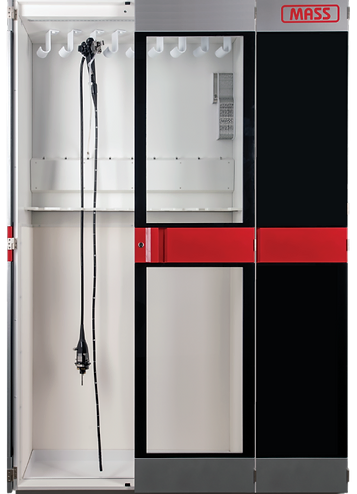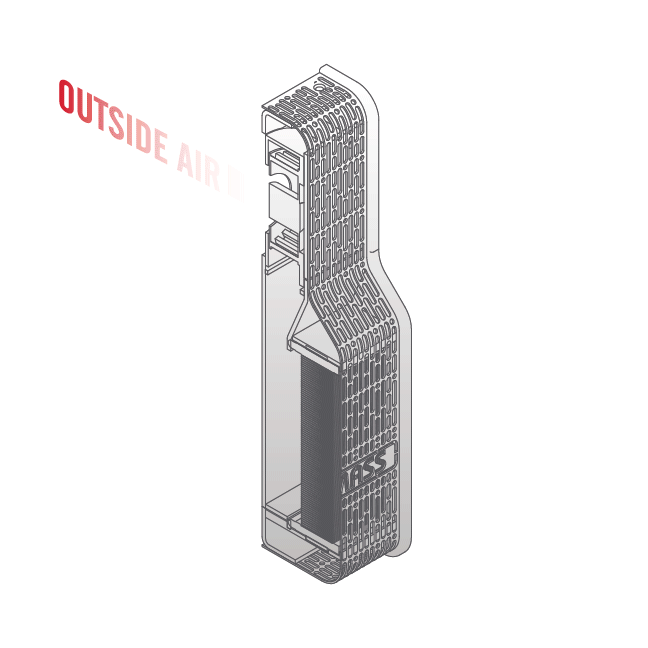
In order to comply with regulating agencies and manufacturers’ instructions for use, your endoscopes must be stored in a clean and dry environment.1-4 Endoscope storage cabinets vary in ventilation offerings. In order to assist you in determining your optimal endoscope storage, MASS™ Medical Storage presents an outline of the four main types of drying options for scope storage cabinets.
Remember to check manufacturer’s IFUs first and foremost to reduce the risk voiding your endoscopes’ warranty.
Drying cabinets with vertically hung endoscopes provide another dimension for infection control.
AORN and SGNA define drying cabinets as endoscope storage equipped with a drying system that continually blows pressurized, HEPA-filtered air through the endoscope’s channels and while also circulating HEPA-filtered air around the exterior of the endoscopes.
The lumen airflow promotes the movement of air through the endoscope’s channel.
The new MASS™ truAIR™ Endoscope Drying Cabinet is engineered to provide HEPA-filtered, pressurized airflow that circulates in the cabinet while filtered air under pressure flows continually through each endoscope’s lumen. This MASS™ proprietary system’s design achieves these standards at an unprecedented value, enabling facilities to meet higher standards and provide their patients with the next generation of endoscope storage.
Each connection continually blows dried, pressurized air through the endoscope’s channels, promoting complete dryness in the scope’s lumen.
Scopes hang vertically, meeting the requirements of The Joint Commission1 and most endoscope manufacturers’ instructions for use.
The MASS™ truAIR™ Endoscope Drying Cabinet is carefully engineered to be fully compliant with The Joint Commission, AORN, SGNA, manufacturers’ IFUs, and other standards and guidelines.
Our cabinet is now available at an unprecedented value.
To reduce the possibility of contamination of stored endoscopes, AORN recommends storing scopes in a closed cabinet that provides positive pressure.
AORN states that using HEPA-filtered air can assist with prevention of bacterial growth on the stored endoscope.
Adding positive pressure to the HEPA filter design incorporates fresh air, rather than merely circulating the air within the cabinet.
Continual air movement, with the inclusion of fresh air, assists with proper storage of reprocessed endoscopes.

To meet minimum requirements from manufacturers and governing societies, endoscopes must be stored vertically in a clean, dry, ventilated cabinet.
Endoscopes must be reprocessed and completely dry before being placed in storage, thus minimizing moisture in the cabinet.
Ventilation will assist with maintaining a dry environment.
Eliminating moisture in the endoscope storage cabinet is vital for proper infection control and
Fill out the form below to receive more information about the MASS™ truAIR™ Endoscope Drying Cabinet
